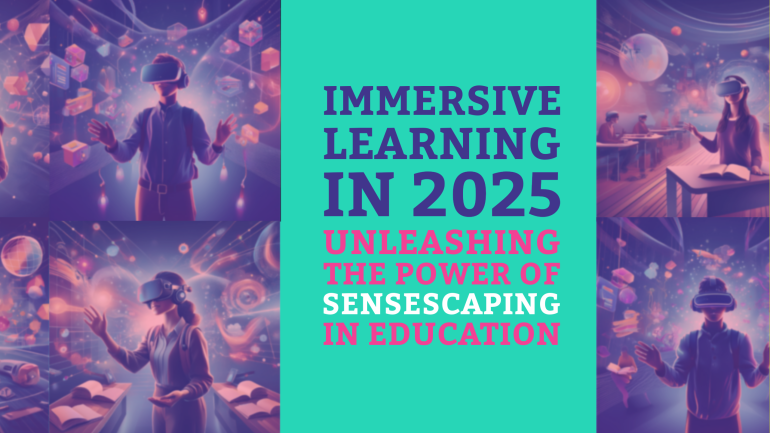Table of Contents
TL;DR: Building Effective Feedback Mechanisms in Education
- Clear objectives: Establish clear goals for the feedback mechanisms in education to ensure they align with the desired outcomes of the learning process.
- Timely feedback: Providing feedback promptly after assessments or activities allows students to make necessary adjustments and improvements in a timely manner.
- Two-way communication: Encourage a dialogue between teachers and students where both parties can provide feedback to enhance the learning experience.
- Constructive criticism: Feedback should be specific, actionable, and focused on helping students understand areas for growth rather than just pointing out errors.
- Use of technology: Implement digital tools and platforms to streamline the feedback process, track progress, and make it more accessible and engaging for all parties involved.
Just as a compass guides a traveler, feedback serves as a crucial tool in steering the journey of education. In academic growth, the presence of effective feedback mechanisms can mean the difference between stagnation and progress. This article examines into the importance of feedback in education, the characteristics of constructive feedback, and strategies for implementing feedback mechanisms that truly empower learners and educators alike.
Designing Feedback Systems
Principles of Effective Feedback
With the overarching goal of improving student learning outcomes, feedback in education must adhere to several key principles. It should be timely, specific, and actionable, focusing not just on what went wrong, but also on how to improve in the future. Additionally, feedback should be delivered in a supportive and constructive manner, highlighting strengths alongside areas for development to encourage growth and motivation.
Tools and Technologies for Feedback Collection
To enhance the efficiency and effectiveness of feedback mechanisms in education, the utilization of various tools and technologies is crucial. Online platforms, surveys, learning management systems, and digital assessment tools can streamline feedback collection and analysis processes. These tools enable educators to access real-time data, track student progress, and provide personalized feedback at scale.
Feedback: Embracing technology in feedback systems can significantly expedite the analysis and delivery of feedback to students. However, it is important to ensure that these tools complement rather than replace human engagement and personalized feedback, as the human touch remains invaluable in educational interactions.
Implementing Feedback in the Learning Environment
Timing and Frequency of Feedback
Some learners may benefit from immediate feedback, while others may prefer feedback after they have had time to process the information. Understanding the timing and frequency that works best for each student is crucial in maximizing the effectiveness of feedback. It is important to strike a balance between providing feedback promptly and allowing students the space to apply the feedback before receiving more.
Training Teachers and Staff on Providing Constructive Feedback
Providing teachers and staff with proper training on offering constructive feedback is key to ensuring that feedback is helpful and empowering for students. Teachers need to be equipped with the skills to deliver feedback in a way that is constructive, specific, and actionable. This training should focus on creating a culture where feedback is seen as a tool for growth rather than criticism.
Feedback should be continuous and ongoing, not limited to formal evaluations. Teachers should provide feedback in various forms – written, verbal, and even peer-to-peer – to ensure that students receive a well-rounded view of their progress. By encouraging a feedback-rich environment, students are more likely to take ownership of their learning journey and strive for continuous improvement.
Evaluating Feedback Efficacy
Measuring the Impact of Feedback on Learning Outcomes
Despite the ubiquity of feedback in educational settings, evaluating its efficacy remains a complex task. One crucial aspect of assessing feedback effectiveness is measuring its impact on learning outcomes. This involves analyzing how feedback given to students directly influences their performance, understanding, and overall educational growth.
Addressing Feedback: From Reception to Action
Efficacy in feedback mechanisms relies not only on the delivery of feedback but also on how students receive and act upon it. Addressing feedback means ensuring that students not only understand the feedback provided but also take actionable steps towards improvement based on the received input. Effective feedback should lead to tangible actions and positive changes in learning behaviors.
Addressing the feedback loop from reception to action is crucial in ensuring that feedback serves its purpose in enhancing student learning. This includes fostering a culture that values feedback, providing opportunities for students to reflect on and apply feedback constructively, and offering support and guidance in implementing suggested improvements.
Challenges and Solutions
Common Obstacles in Feedback Implementation
On the path to effective feedback implementation in education, several common obstacles can hinder progress. These hurdles often include resistance from educators or students, lack of time or resources, and inadequate training on providing constructive feedback.
Best Practices for Overcoming Feedback Challenges
To navigate and conquer the feedback challenges mentioned earlier, it is necessary to establish a culture of open communication and continuous improvement within educational institutions. Encouraging a growth mindset among teachers and students can foster a receptive attitude towards feedback.
Feedback is a crucial component of the learning process that can significantly impact student growth and achievement. It is necessary to provide timely and specific feedback that focuses on areas of improvement while also acknowledging strengths. Implementing regular feedback sessions and utilizing a variety of formats, such as verbal, written, or digital, can cater to diverse learning styles and preferences.
Final Words
Drawing together effective feedback mechanisms in education is crucial for improving learning outcomes and fostering student growth. By implementing regular feedback loops, educators can gain invaluable insights into student progress, identify areas for improvement, and tailor their teaching strategies accordingly. Students benefit from timely feedback that enables them to reflect on their performance, set goals for development, and take ownership of their learning journey. It is vital for educational institutions to prioritize building robust feedback mechanisms that are transparent, constructive, and supportive. Ultimately, investing in effective feedback mechanisms not only enhances the learning experience but also paves the way for continuous improvement and success in education.
FAQ
Q: What are feedback mechanisms in education?
A: Feedback mechanisms in education refer to processes and tools that enable teachers, students, and other stakeholders to provide and receive feedback on the learning experience, performance, and outcomes.
Q: Why are feedback mechanisms important in education?
A: Feedback mechanisms are crucial in education as they help improve teaching practices, enhance student learning outcomes, foster a growth mindset, and promote continuous improvement in the educational system.
Q: How can teachers effectively provide feedback to students?
A: Teachers can effectively provide feedback to students by being specific, timely, and constructive in their comments, focusing on the task rather than the individual, and offering suggestions for improvement.
Q: How can students make the most out of feedback received from teachers?
A: Students can make the most out of feedback by actively engaging with it, reflecting on their performance, setting goals for improvement, seeking clarification when needed, and implementing suggested changes in their work.
Q: What are some examples of feedback mechanisms that can be implemented in education?
A: Examples of feedback mechanisms in education include quizzes and tests, peer reviews, self-assessment tools, classroom discussions, surveys, and digital feedback platforms that enable interactive and personalized feedback exchanges between teachers and students.




